
伤口世界
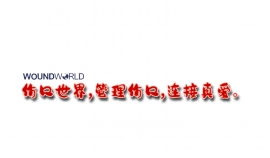
- 星期四, 07 9月 2023
Diabetic gastroparesis
Gastroparesis is a recognised complication of diabetes (both type 1 and type 2) and, whilst not the most commonly observed complication, it carries with it a significant impact on a person’s health, glycaemic control, social functioning and mental wellbeing. Gastroparesis is often not well recognised because of the disparate group of symptoms it may present with. Symptoms are often misattributed or not recognised, and consequently the diagnosis is either missed or delayed. It should be managed by a multidisciplinary team with knowledge of and expertise in this area. Above all, the team should be understanding and help steer patients to the best supportive care.
Author: Simon Saunders,
Clinical Lead Academic Consultant in Diabetes and Endocrinology, Mersey and West Lancashire Teaching Hospitals NHS Trust
Citation: Saunders S (2023) At a glance factsheet: Diabetic gastroparesis. Diabetes & Primary Care 25: [Early view publication]
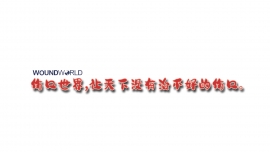
- 星期三, 06 9月 2023
Bilateral Charcot neuroarthropathy following successive surgical arterial revascularisation to both legs in a patient with diabetes — an interesting case history
Neil Baker and Isam Osman
An unusually good blood supply and peripheral neuropathy are reportedly accepted prerequisites for the pathogenesis of Charcot neuroarthropathy (CN) in people with diabetes. There is anecdotal evidence that CN does not occur in the presence of peripheral vascular disease. We report the first case of a person with diabetes who had revascularisation surgery performed to both legs independently, which was subsequently followed by CN in the corresponding feet. This case illustrates the importance of a good blood supply in the development of CN. Furthermore, it supports the concept that reduced arterial supply is protective against the development of CN. This case also highlights the need for regular follow-up reviews where postoperative hyperaemia is evident.
Citation: Baker N, Osman I (2023) Bilateral Charcot neuroarthropathy following successive surgical arterial revascularisation to both legs in a patient with diabetes — an interesting case history. The Diabetic Foot Journal 26(1): 36–9
Article points
1. A very good blood flow is a prerequisite for active Charcot development
2. Although this is a rare case, it is advised to be vigilant in monitoring a hot, swollen, inflamed foot and leg after vascular intervention in a patient with existing neuropathy
3. Early detection and immobilisation (cast) of active Charcot with regular follow up is imperative to facilitate optimal resolution and reduction in deformity
4. Differential diagnosis is essential in the presentation of a neuropathic red/ discoloured (dark), hot, swollen foot and leg, particularly if ulceration is present.
Authors
Neil Baker is Consultant Diabetes /Vascular Podiatrist, Sana Clinic Al Shaab Kuwait; formerly Ipswich Hospital NHS Trust; Isam Osman is Consultant Vascular Surgeon, King Saud Medical City, Riyadh, Saudi Arabia; formerly Ipswich Hospital NHS Trust;
Key words
- Charcot
- Neuropathy
- Peripheral arterial disease
- Vascular intervention
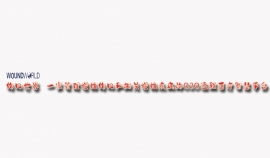
- 星期二, 05 9月 2023
Diabetes and menopause
Metabolic changes that occur during menopause are associated with increased incidence of type 2 diabetes and its risk factors, while menopausal symptoms have a negative effect on a person’s day-to-day life, and consequently their diabetes self-management. In women who are going through menopause, effective hormone replacement therapy (HRT) can improve a wide array of cardiometabolic risk factors as well as the risk of new-onset type 2 diabetes. This factsheet covers the relationship between menopause and type 2 diabetes and provides recommendations on optimising HRT in women with diabetes.
Author: Claire Partridge, RGN, MSc Health Sciences (Diabetes)
Citation: Partridge C (2023) At a glance factsheet: Diabetes and menopause. Diabetes & Primary Care 25: [Early view publication]
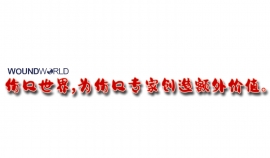
- 星期一, 04 9月 2023
The impact of venous leg ulcers on a patient’s quality of life: considerations for dressing selection
Patients with venous leg ulcers (VLUs) experience a wide range of physical and psychosocial issues. This paper focuses on the impact of the sequelae of VLUs and the interventions that can be used to minimise that impact on patient wellbeing. VLU-related issues are described, such as high exudation with risk of leakage, soiling of clothing and bed linens, and the embarrassment this can cause. This also leads to the need for more frequent dressing changes, and potential dressing-related trauma associated with pain, stress and anxiety. Finally, dressing characteristics that should be considered in order to address these issues and improve the quality of life of patients with VLUs are discussed.
Authors:
Dot Weir and Phil Davies
Dot Weir is Wound Clinician, Saratoga Hospital Center for Wound Healing and Hyperbaric Medicine, Saratoga Springs, New York, US;
Phil Davies is Senior Global Medical Affairs Manager, Medical and Economic Affairs, Mölnlycke Health Care, Gothenburg, Sweden
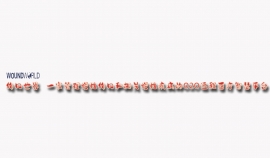
- 星期五, 01 9月 2023
Ten top tips: realistic expectations about amputation
Authors:
Margaret Doucette and Stephanie Seabolt
Margaret Doucette is Associate Chief of Staff for Research at Boise VA Medical Center and Medical Director for the Wound/High Risk Foot/ Amputee Program. Clinical Associate Professor Univ of Washington, US;
Stephanie Seabright is Registered Nurse Clinical Research Coordinator at the Boise VA Medical Center working in wound/high risk foot clinic and Masters of Science in Nursing graduate student at Western Governor’s University, US Am putation of a lower extremity can be devastating, debilitating and demoralising, or it can be a successful, beneficial, definitive end point to a nonhealing diabetic foot ulcer (DFU). The decisionmaking process of if, and when, to amputate begins at the first patient visit and should be incorporated into the patient discussion early on for all high-risk patients. While prevention of amputation is most commonly the goal, early identification of risk factors and risk stratification can help design a realistic care plan, compassionately inform patient expectations and steward resource allocation. These 10 top tips will help guide you with the plan of care.

- 星期四, 31 8月 2023
Physiotherapists’ knowledge and use of electrotherapy in the management of chronic wounds
Chronic wounds are becoming of public health concern, and despite extensive literature supporting the use of electrotherapy in the management of chronic wounds, Nigerian physiotherapists are rarely involved in wound care. This study sought to determine physiotherapists’ knowledge and use of electrotherapy in wound management. It used a self-administered questionnaire to collect information from physiotherapists in various practice settings. It was found that the majority of respondents (98.7%) had a good understanding of the role of electrotherapy in wound care, but had a poor understanding of both precaution (10.2%) and wound assessment (7.9%). Only 11.8% of physiotherapists were found to be involved in wound care and there was no association between knowledge and job rank (P =0.27).
Author:
Chioma Lynn Onuchukwu
Chioma Lynn Onuchukwu is Chief Physiotherapist, Enugu State University Teaching Hospital, Enugu, Nigeria
